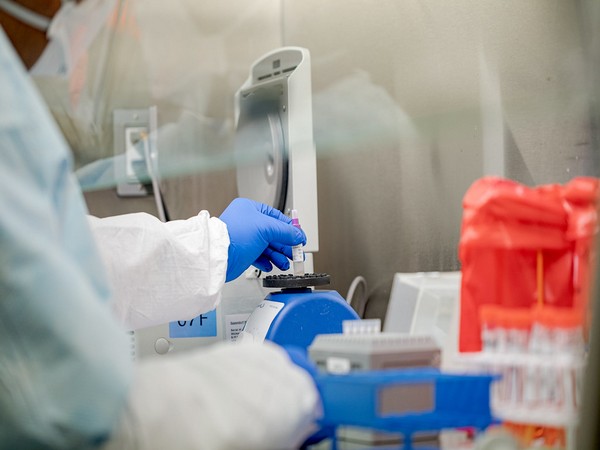China reports 34 new coronavirus cases; submits virus genome sequence to WHO
China has reported 34 new coronavirus cases, including 22 in Beijing, where the health officials have submitted the virus genome sequence from the recent clusters of COVID-19 infections to the World Health Organisation, officials said on Saturday.

- Country:
- China
China has reported 34 new coronavirus cases, including 22 in Beijing, where the health officials have submitted the virus genome sequence from the recent clusters of COVID-19 infections to the World Health Organisation, officials said on Saturday. The National Health Commission (NHC) said 34 new cases, including seven asymptomatic infections of the COVID-19, were reported in the country.
Twenty-two domestically transmitted cases were reported in Beijing and one in Hebei Province, the NHC said. It said 108 asymptomatic cases, including 57 from overseas, were still under medical observation.
Beijing reported 22 newly confirmed domestically-transmitted COVID-19 cases and two asymptomatic cases on Friday, the municipal health commission said on Saturday. By the end of Friday, Beijing had reported 625 confirmed domestically-transmitted cases, including 411 who had been discharged from hospitals after recovery and nine deaths. There were 17 asymptomatic cases still under medical observation.
The NHC said on Saturday that mainland China till now has reported 83,352 confirmed cases of coronavirus and 4,634 deaths. The officials alleged the new strain of the virus in Beijing came from Europe.
So far, 174 imported cases have been reported in Beijing, with one still hospitalized. The Chinese Centre for Disease Control and Prevention (CDC) has released the virus genome sequence from the recent clusters of COVID-19 infections related to Beijing's Xinfadi wholesale farm produce market.
The data, released through the Novel Coronavirus National Science and Technology Resource Service System on Thursday came from both COVID-19 case samples and environmental samples. The CDC has submitted the relevant genome sequence to the WHO and the global initiative on sharing all influenza data to share the data globally.
Chinese virologists alleged the strain of the new virus in Beijing has European origin. An initial epidemiological survey shows the coronavirus strain detected at the Xinfadi wholesale market in Beijing came from Europe, a report in state-run Global Times said.
It said the strain had existed longer than the current coronavirus strain circulating in Europe, Chinese virologists inferred. They say it is possible that the virus did not mutate during transport as it was sealed in frozen food, stored in cold and damp conditions, it said.
Wu Zunyou, chief epidemiologist at the Chinese Centre for Disease Control and Prevention, told the media on Thursday that the "findings at Beijing reminded us of the first outbreak of COVID-19 in Wuhan last year, which happened at the Huanan Seafood Wholesale Market". The focus of the Huanan investigation was the wild animal stalls, even though the seafood sellers were right next to them, Wu said.
The WHO has already questioned the Chinese officials' claims that the virus was traced to the imported salmon in Xinfadi and purported origins to Europe saying that there is no evidence to back it. Ever since US President Donald Trump blamed China for not containing the COVID-19 when it first showed up in Wuhan in December last year, the debate over the origin of the virus has intensified.
For its part, China sought to shift the blame saying that the virus may have been originated elsewhere and surfaced in Wuhan. President Trump and leaders of several countries have accused China of not being transparent in reporting the deadly disease, leading to huge human casualties and economic crisis across the world.
A new study by Harvard researchers recently said satellite images show an increase in traffic outside five hospitals in the Chinese city from late August to December raising doubts that the virus may have surfaced in Wuhan by that time. The traffic spike coincided with a rise in online searches for information on symptoms like "cough" and "diarrhea".
China said the study was "ridiculous" and based on "superficial" information, it said. Recently, the World Health Assembly (WHA), the decision-making body of the Geneva-based WHO, passed a unanimous resolution to probe the origin of the virus. China also backed the resolution.
Most of the new cases have been linked to the Xinfadi wholesale food market. Until a week ago, the Chinese capital had been free of local transmission for 55 days.
(This story has not been edited by Devdiscourse staff and is auto-generated from a syndicated feed.)
ALSO READ
MORNING BID EUROPE-Middle East tensions spook markets
European shares slide to two-week low on hawkish Fed comments, geopolitical worries
European Commission examines complaint about Hungary's tax on foreign retailers
UPDATE 1-European shares slide to two-week low on hawkish Fed comments, geopolitical worries
European shares slide to two-week low on hawkish Fed comments, geopolitical worries










